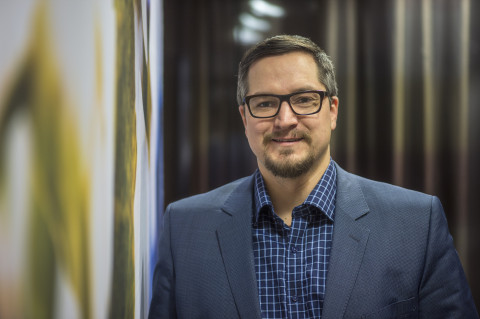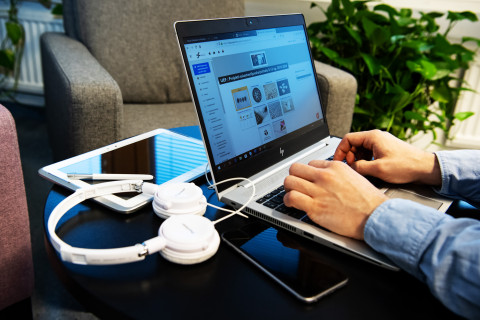In recent years, learning environments have assumed a central role in the university sector, and digitalisation serves as an inspiration to acquire all kinds of devices and apps for the classroom. However, new devices and modern facilities are meaningless, unless teaching is developed in tandem with their introduction.
At the University of Eastern Finland, this was recognised many years ago.
“We wanted to drive the change caused digitalisation especially with teaching and learning in mind,” says Postdoctoral Researcher Erkko Sointu, the academic leader of the Flipped Learning project.
Indeed, the university’s facilities have since been gradually renewed in a direction that promotes student-centred learning, collaboration and independent studying.
The objective of the project is to use research-based knowledge to develop the skills in digital pedagogy of the university’s teachers and to make them increasingly well equipped to utilise student-centred teaching methods, thus promoting students’ academic and working life skills.
The project employs the flipped classroom method which reverses the traditional learning environment and aims at a culture of flipped learning. The project is based on systematic flipped classroom training made available to the university’s teaching staff.
“No change is successful without shared efforts and people’s commitment to them. Here, a vital role has been played by teachers who have participated in the flipped classroom training as well as by the university’s Learning Environment Development Manager and Team Ameba. Furthermore, the leadership’s support for flipped classroom has been important.”
A new role of the teacher
In flipped classroom, traditional lecture-based teaching gets reversed.
“To put it simply, students study their pre-reading materials, which in the traditional approach would be covered during lectures, independently by using different technological solutions. When they arrive to class, the new information is analysed and applied, and problems are solved in a collaborative manner,” Sointu explains.
According to him, continuous assessment is integrated into different phases of learning, and the teacher plays an important role in this assessment. Finding an appropriate sequencing for components of teaching and learning to serve the big picture is key in flipped classroom.
“In other words, the role of the teacher has changed from a sharer of information to that of an instructor and mentor. It is also the task of the teacher to guide students when they are solving problems in small groups.”
Flipped classroom also gives the teacher more time to focus on students personally, making it easier to create individual study paths.
Hand in hand with research
In addition to the development of teaching methods, flipped classroom is also a topic of constant research.
“Thanks to flipped classroom, our students’ attitudes towards collaborative learning, for example, have become increasingly positive. Moreover, our research indicates that their sense of self-efficacy and self-regulation have improved as well.”
For a teacher, flipped classroom provides a clear framework within which to learn new things about digital solutions and student-centredness.
“I believe flipped classroom has been so well received here due to it being close enough to traditional teaching. Flipped classroom is seen as a gateway to change and as an opportunity for professional development.”
Enthusiastic educators
Flipped classroom found its way to the University of Eastern Finland when Lecturer Markku Saarelainen from the Department of Applied Physics found that his students were struggling to pass a course in the theory of electricity. After he “flipped” the course, the pass rate increased from 20% to 90%.
“First, his own department got excited about the new teaching method, and the excitement started to spread within the university. Soon, we were at a point of no return.”
This is also when collaboration with Team Ameba started. Currently, the University of Eastern Finland has approximately 100 teachers who have completed flipped classroom training.
“I’m delighted about how closely connected and motivated this network of teachers has become. We regularly share best practices and experiences, and compare the latest apps for teaching and learning.”
One of the strategic goals of the University of Eastern Finland is to be the best academic learning environment in Finland by 2020. If you ask the university’s flipped classroom teachers, achieving this goal will be relatively easy.
Team Ameba at the University of Eastern Finland supports the use of the flipped classroom method and the research-based development of the university’s learning environments. The team members represent a variety of different disciplines. Team Ameba has designed and is currently conducting a study that charts students’ and teachers’ ideas of learning environment development, and this insight will be used in the further development of the university’s learning environments.
http://www.uef.fi/en/web/ameba/tutkimus




